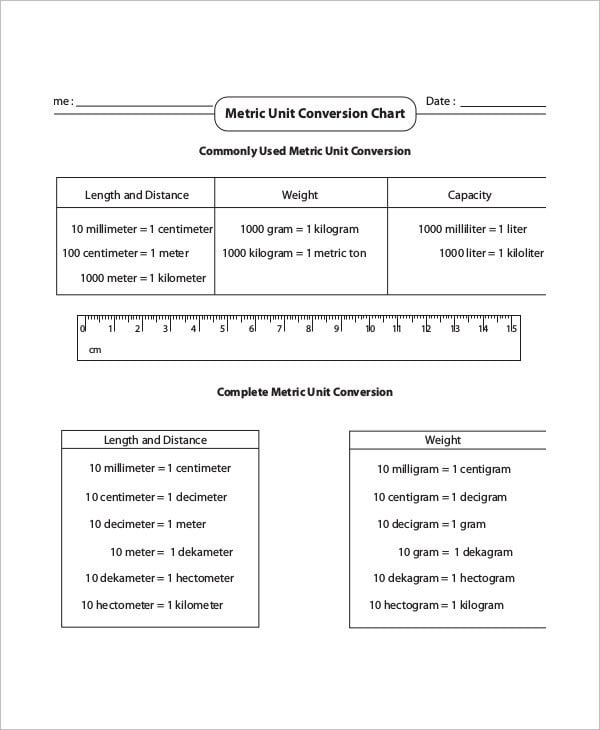
We will (hopefully) one day use the metric system. We are outliers in our continued use of the imperial system. Some measurements in the metric system are meters, kilograms, and liters. A few examples of measurements in the imperial system include inches, pounds, and gallons. Besides the U.S., only Liberia and Myanmar (Burma) still use the imperial system. Nearly every other country in the world uses the metric system of measurement. In Biotechnology, we will primarily be concerned with converting units of mass and volume. If you were to measure a graduated cylinder in a lab, you would most likely record measurements of length in centimeters, measurements of mass of in grams, and measurements of volume in respect to the base unit liter. We could choose to record its mass in grams, kilograms, or pounds. For example, we could measure its length in inches, centimeters, or meters. But, we could choose to measure those properties in differing units. We could measure its length, mass, and volume. What are some various ways we could measure an object? Take, for example, a graduated cylinder. The metric system is vital to unit conversion. We will return to our idea of a "fancy one" later. How might we go about this? We will use "fancy ones." For example 3 3 is a "fancy one" and 12 ÷ 12 is also a "fancy one." A "fancy one" is a number that is equivalent to one, but looks a little fancier (hence the name).īefore we continue, let's put aside this idea of a fancy one-and take a look at the metric system. We can use the Multiplication Property of 1 to convert units.

For example, the fraction 3 3 is equal to 1, and 12 ÷ 12 is also equal to 1. You still multiply by 1, but the number 1 just appears differently. This same property is also used in the second and third questions. The application of this property is clearest in the first question, where 243

in grams? How about kilograms? What about nanograms? In order to answers these questions, you'll need to be proficient at converting from one unit to another.īefore we start explaining unit conversion, we need to review some important math concepts, namely the Multiplication Property of 1.ĭid you answer 243 for each of the questions? If you did, you are already familiar with the multiplication property of 1 - which states that anything multiplied by 1 is itself.



 0 kommentar(er)
0 kommentar(er)
